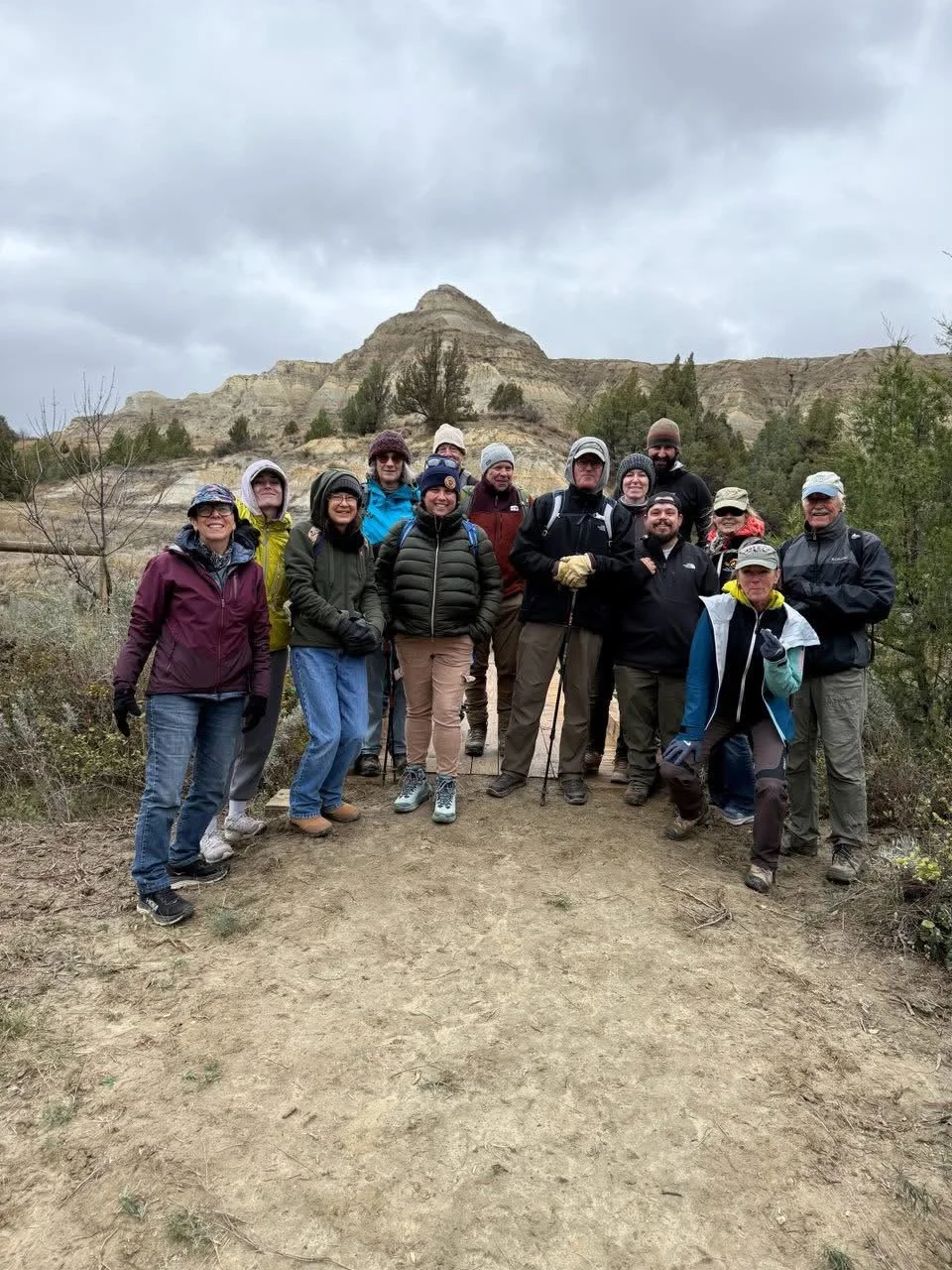BCA launched the Badlands Conservation Corps, a collaboration between BCA and Strengthen ND to bring AmeriCorps field crew members to work on short-term service projects to improve the grasslands of western North Dakota.
Starting a Badlands Conservation Corps (BCC) is a positive direction for the state of North Dakota.
Follow gf.nd.gov/legislation for news about outdoor legislation in North Dakota.
BCA launched the Badlands Conservation Corps, a collaboration between BCA and Strengthen ND to bring AmeriCorps field crew members to work on short-term service projects to improve the grasslands of western North Dakota.
The Public Lands Rule comment period ends on Monday, November 10th, 2025.
Starting a Badlands Conservation Corps (BCC) is a positive direction for the state of North Dakota.
Join us for a film screening and discussion series featuring Walt Dabney, a nationally recognized public lands leader whose 43-year career spanned the National Park Service (NPS) and Texas Parks and Wildlife.
From May to July, 2025, the six-person BCC field crew provided approximately 1,800 hours of service. Working alongside 13 project partners, BCC maintained 40 miles of trails, removed 4.75 miles of fencing, installed or repaired 30 mile markers and other posts, placed eight benches, and reinforced two erosion-preventing bridges.
My first two years as your Executive Director have paid dividends through relationship building. This was evident in our BCC field crew and how well it has been received. My goal for the next 25 years, BCA will serve as both ‘watchdog,’ and a ‘boots on the ground solution’ to improve western ND for future generations.
USDA's public comment period ends on Tuesday, September 30th.
The Roadless Rule comment period will end on September 19. Let's stop this while we still can.
News from western North Dakota for June and July, 2025.
The Badlands Conservation Corps (BCC) is a collaboration with the Badlands Conservation Alliance (BCA) and Strengthen ND to bring AmeriCorps field crew members out to work on short-term service projects to improve public lands, the Three Affiliated Tribes National Park, as well as the grasslands of western North Dakota.
Badlands Conservation Alliance’s 2024 annual meeting was held in Bismarck at the Bismarck Veterans Memorial Public Library on Saturday, November 16th. The event celebrated BCA’s 25th anniversary and featured speaker Michael Barthelemy, Director of Native American Studies at Nueta-Hidatsa-Sahnish College.
Ben Rawlence, a British writer and journalist, has researched and compiled a fascinating look at the seven major trees in six ecosystems of the northernmost forest, the treeline forest.
Your voice matters and this is the time to stand and have it heard! You as BCA members are more critical than ever. BCA will continue to monitor the various threats from oil and gas development, air quality issues around Theodore Roosevelt National Park, water extraction from the Little Missouri Scenic River, and the potential of rare earth mineral mining.
You can learn more about the Maah Daah Hey National Monument campaign at the coalition’s official website, ProtectMDH.com. Please show your support by signing the petition calling on the president to designate the national monument.
Badlands Conservation Alliance is dedicated to the restoration and preservation of the Badlands and rolling prairie ecosystem comprising western North Dakota’s public lands, both state and federal. We provide an independent voice for conservation-minded North Dakotans and others who appreciate this unique Great Plains landscape.
In 2024, BCA’s projects and collaborations included the Maah Daah Hey National Monument campaign, a legal intervention to defend the Bureau of Land Management’s Public Lands Rule, advocating for Suitable for Wilderness areas during the public comment period for the Dakota Prairie Grasslands Travel Management Plan, and submitting comments to the Bureau of Land Management regarding oil and gas leases.
By closing superfluous roads and limiting unnecessary road construction, and prioritizing non-motorized recreation, we send a strong message that the Badlands and Little Missouri National Grasslands are open, accessible and enjoyable for future generations. BCA supports a Travel Management Plan that better strikes a balance between public access and the conservation of North Dakota’s unique western ND landscape.
Badlands Conservation Alliance joins legal intervention to defend federal public lands conservation rule from ND, MT, ID lawsuit. Community, Tribal and environmental groups today filed a motion to intervene in a federal lawsuit from the states of North Dakota, Montana, and Idaho challenging the Bureau of Land Management’s new public lands rule, which creates a framework for the agency to manage 245 million acres for conservation. The coalition aims to defend the Bureau’s authority to adopt the long-awaited conservation rule from the states’ lawsuit.
BCA teams up with Laughing Sun and Atypical to create limited beer releases that raise awareness about conservation in western North Dakota. A portion of sales will be donated to support BCA’s mission.



